What is a Protractor – Definition with Examples
reviewed by Jo-ann Caballes
Updated on December 26, 2024
The protractor is one of many geometrical instruments but instead of drawing shapes, its primary purpose is to measure and draw angles.
Here, we learn all about the protractor use and how to draw angles with this instrument.
What is a Protractor?
A protractor is a tool in geometry, usually made of plastic, glass, wood, or steel, used to measure and draw angles.
Protractor definition
The protractor definition in geometry is an object used to measure, draw, and find missing angles.
What does a protractor look like?
A geometry protractor is a semi-circle made of plastic, wood, or metal. It contains degree markings that go from 0° to 180° in the rightward direction and another set of markings that also go from 0° to 180° but in the leftward direction.
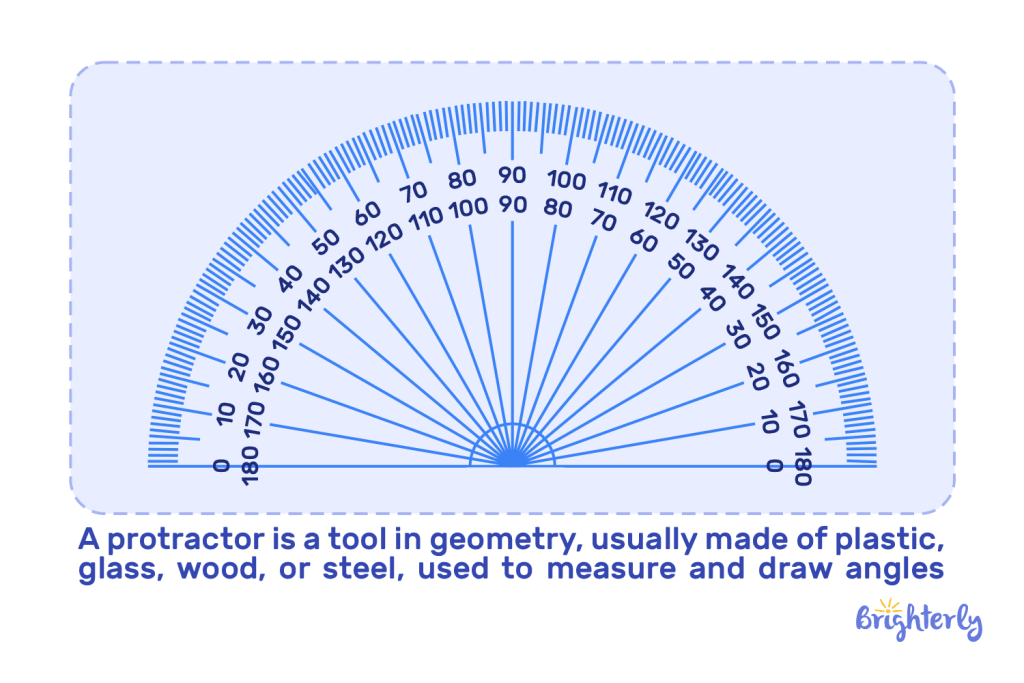
How to Use a Protractor?
To use this instrument, you must first understand the protractor parts. The protractor degrees in the arc measure from 0° to 180° and can be used to know the size of an angle. The straight edge is used to properly place the instrument on the lines or vertex that is to be measured.
How to Read a Protractor?
As we mentioned earlier, there are two parts of a protractor that measure from 0° to 180°. However, the first marking goes in a clockwise direction and the second marking goes in a counter-clockwise direction.
If the angle opens to the right side, use the scale that extends clockwise and if the angle opens to the left side, use the scale that extends counterclockwise.
The below protractor example shows how we use it depending on where the angle opens:
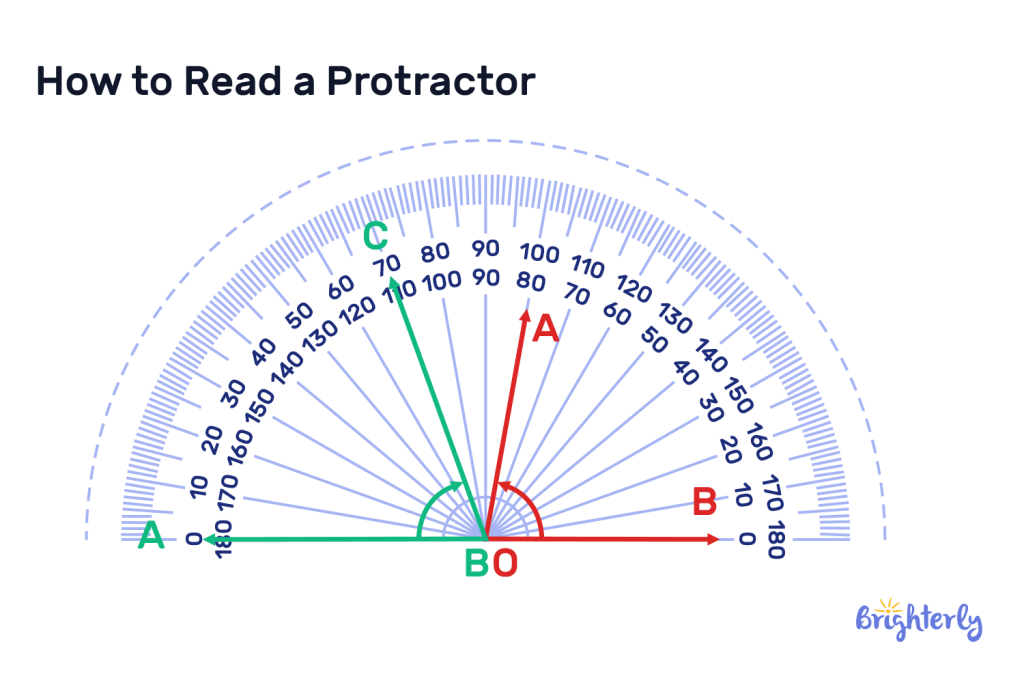
The angle where the second hand of the shape touches the protractor is the angle’s degree.
Measuring Angles with a Protractor
You only need 1 protractor to measure an angle. Begin by ensuring that the protractor is functional and the angle to be measured is 180° or less. If higher, a 360°protractor may be more appropriate.
How to Draw Angles With a Protractor?
Drawing angles with a protractor also requires the same level of focus and concentration. A ruler may be needed to draw the baseline, then, the protractor is placed upon the line to create the angle.
360° Protractor
There is another type of protractor that spans from 0° to 360°, forming a complete circle and not a semi-circle. This type of protractor is used for measuring and drawing angles that are above 180°.
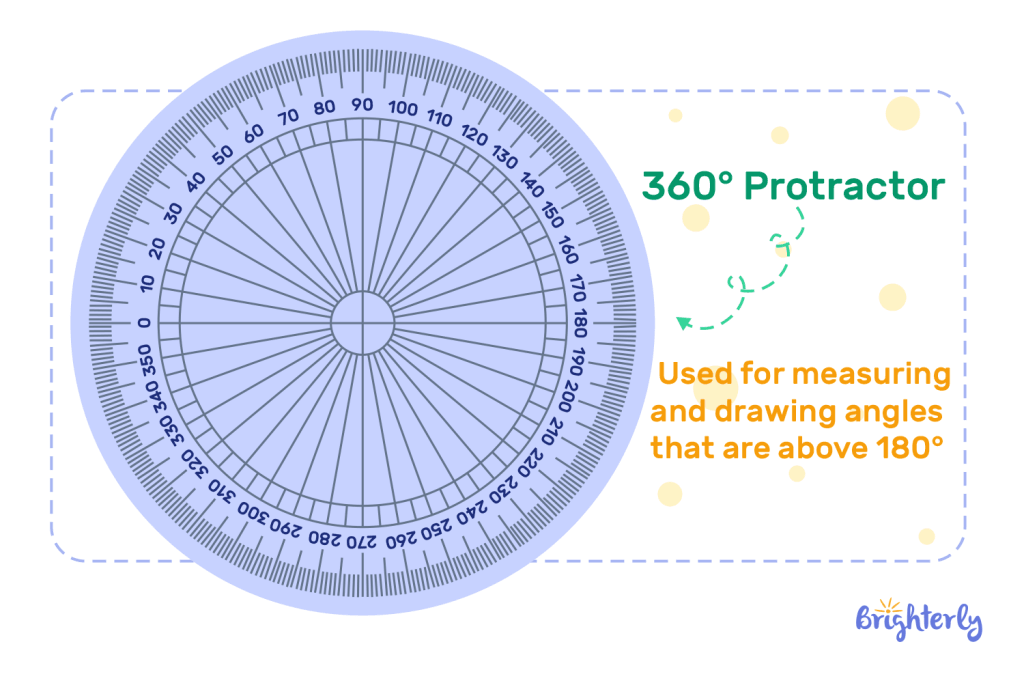
How to Use a Protractor to Measure an Angle
Set the protractor on the shape’s vertex and then observe where the vertical side meets the scale on the protractor.
How to Use a Protractor to Draw an Angle
First, draw a straight line, place the protractor on the line, highlight the intended angle on the paper according to the protractor’s scale, and join this point to the straight line.
How To Measure an Angle Using a Protractor
You can learn how to measure angles using a protractor in 3 easy steps and here they are:
Step 1: Align the protractor’s center point on the straight edge with the angle’s vertex.

Step 2: Ensure that the horizontal line tallies with the straight edge of the protractor.
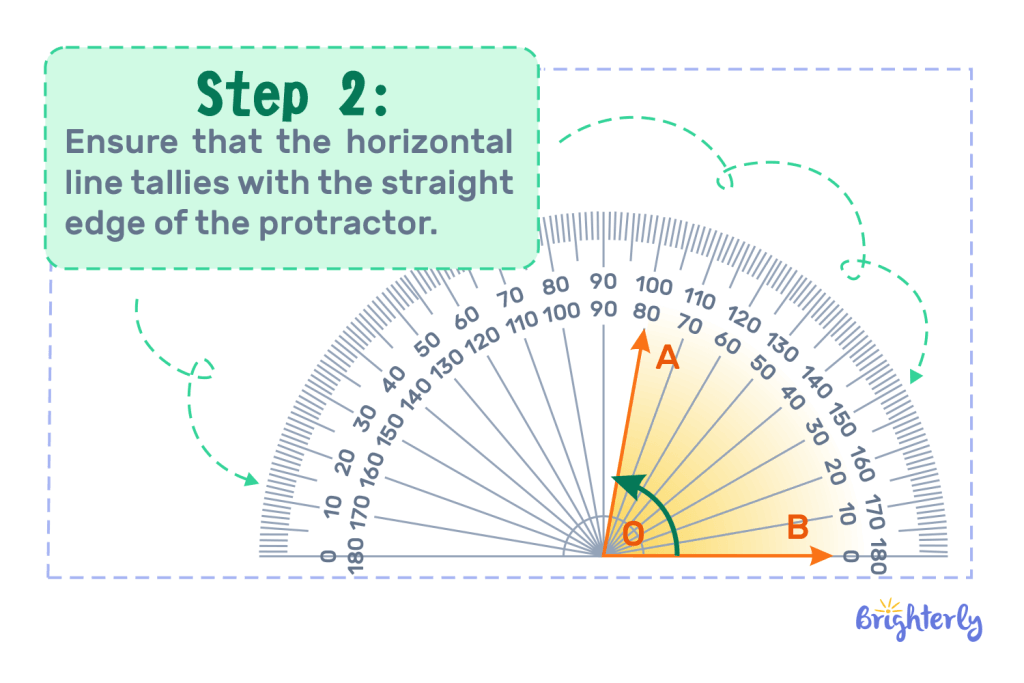
Step 3: Observe the scale where the vertical line crosses on the protractor. This is the angle’s degree.
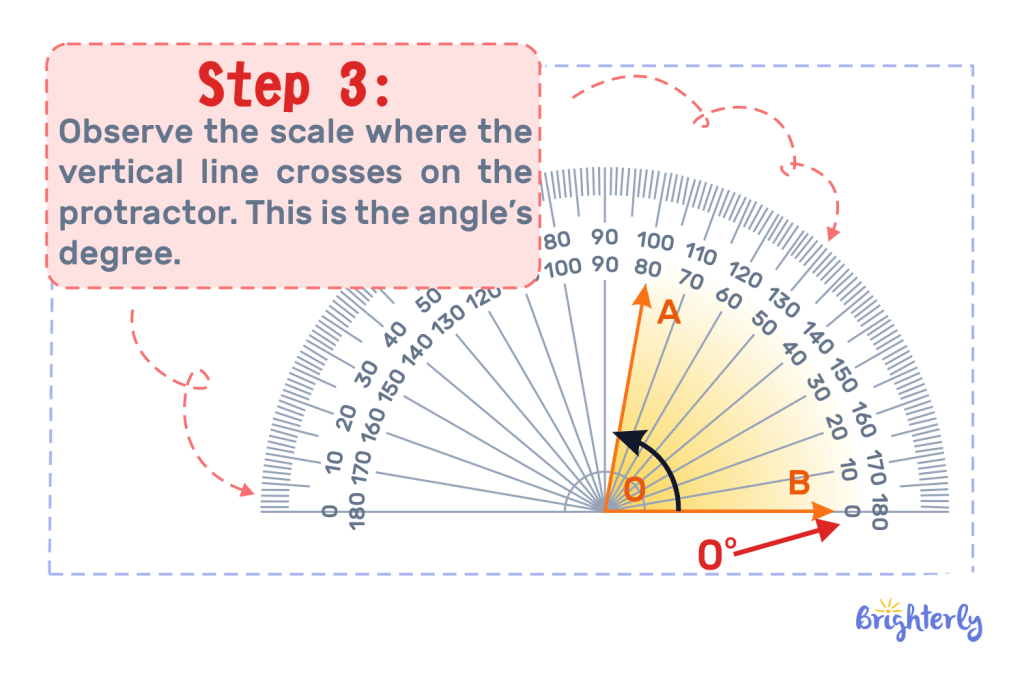
How Do You Draw an Angle Using a Protractor
With a protractor, drawing an angle is also possible. However, you may also need a ruler to help with this:
Step 1: Draw a straight horizontal line. This line has point A and point B.
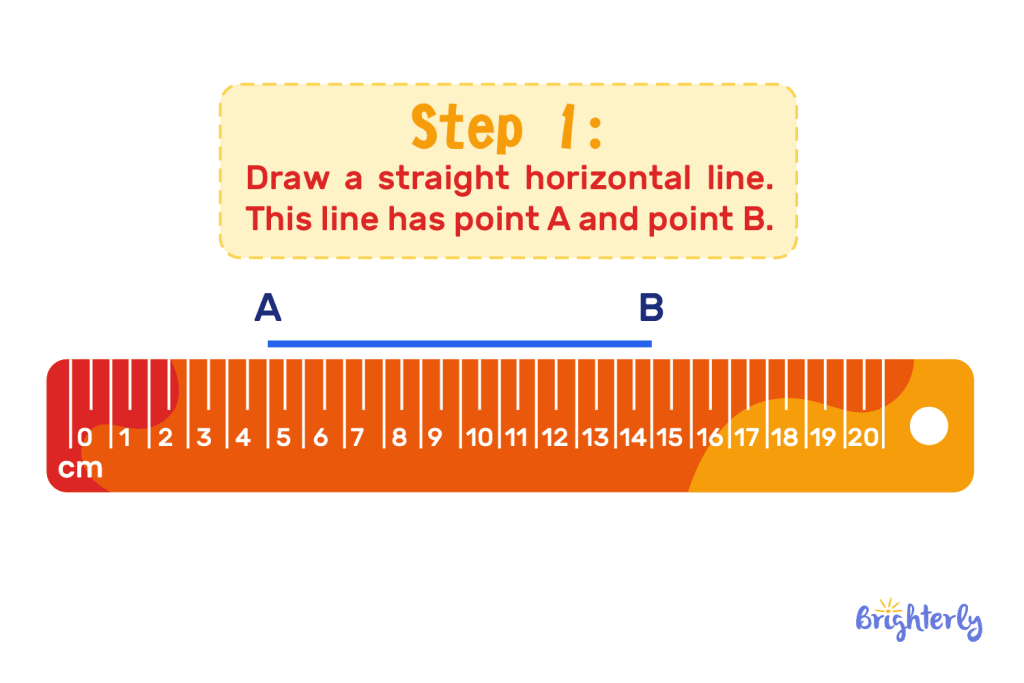
Step 2: Place the center of the protractor on point A and let point B extend to 0° on the protractor.

Step 3: Observe the angle you want to draw on the protractor, if it is 80°, put a point on the paper where the scale reads 80° on the protractor. This is point C.

Step 4: Join all the points together with a ruler.

Solved Examples on Protractor
Solved math problem 1
The below triangle is equilateral. What is the measurement of the angle?
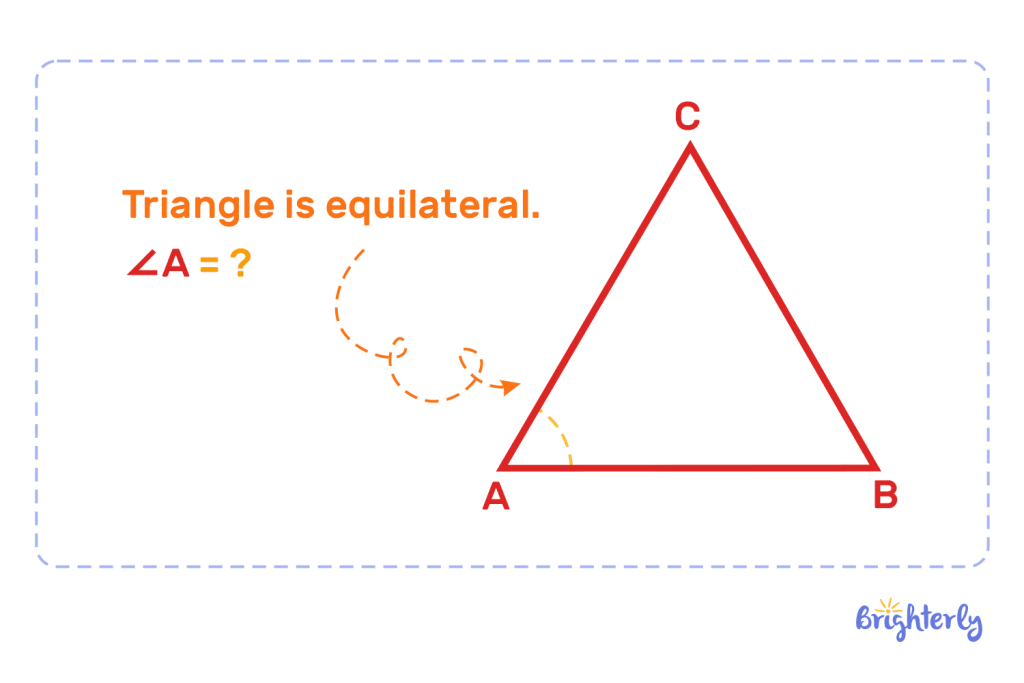
Solution
We place the protractor on the horizontal line of the triangle, then ensure point AB is aligned to 0°. Next, we observe where the vertical side meets the scale on the protractor.
| This is 60°. |
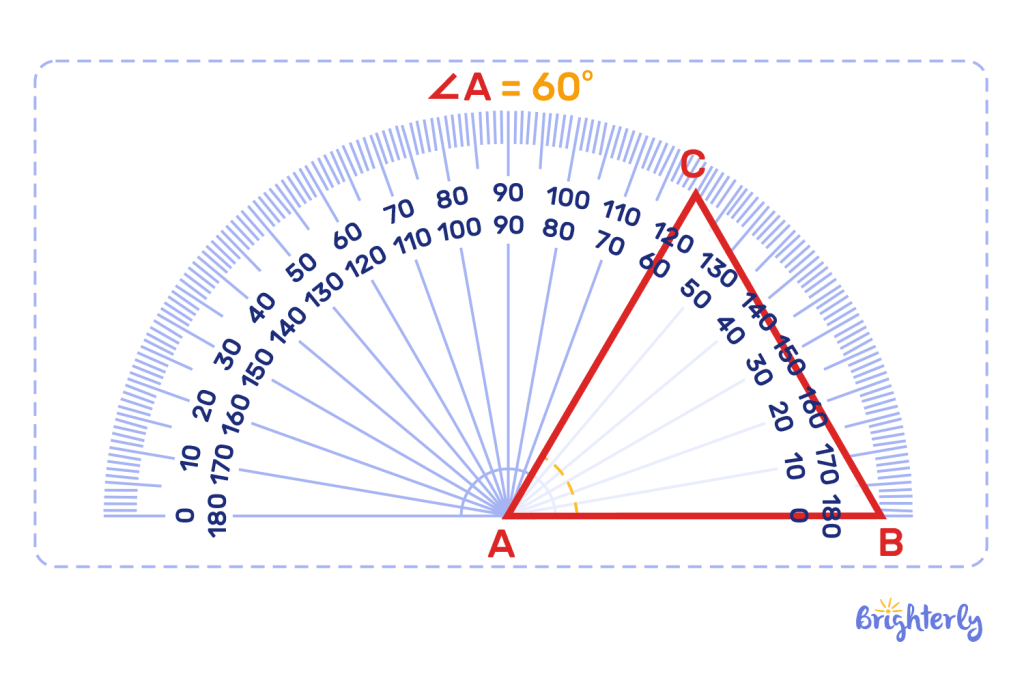
Practice Questions on Protractor
Frequently Asked Questions on Protractor
What is the use of a protractor?
A protractor is a geometric tool used to draw and measure angles,
How can I measure an angle with a protractor?
Measure angles with a protractor by placing the instrument on the vertex and then observe where the vertical side meets the scale on the protractor.
How can I draw an angle using a protractor?
You can draw an angle with a protractor by drawing a straight line, placing the protractor on the line, highlighting the intended angle on the paper according to the protractor’s scale, and joining this point to the straight line.
What is a 360° protractor and how is it different from a regular protractor?
The 360° type of protractor is used for measuring and drawing angles that are above 180°.
Protractor: worksheets
Now, you can answer the question ‘What is a protractor used for?”.
Learn more about the protractor meaning and how to use a protractor for kids, as well as other geometry instruments with our free worksheets:




